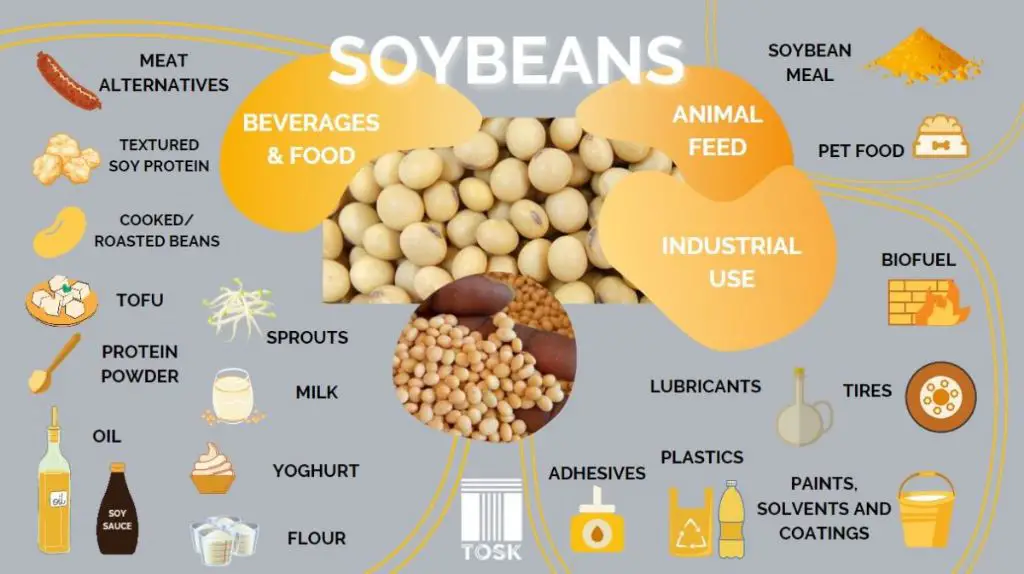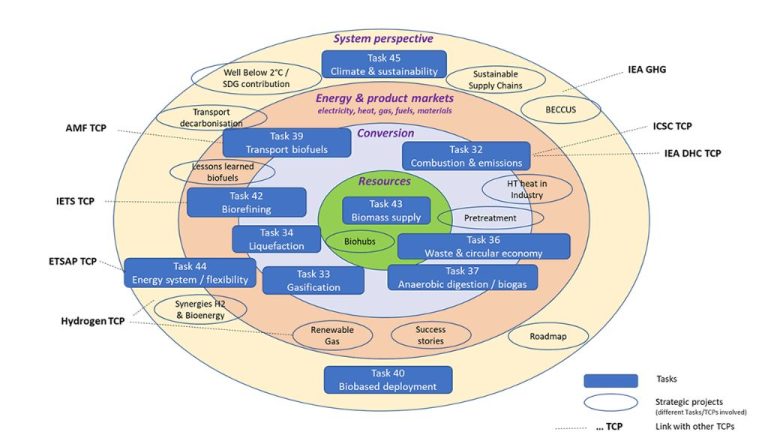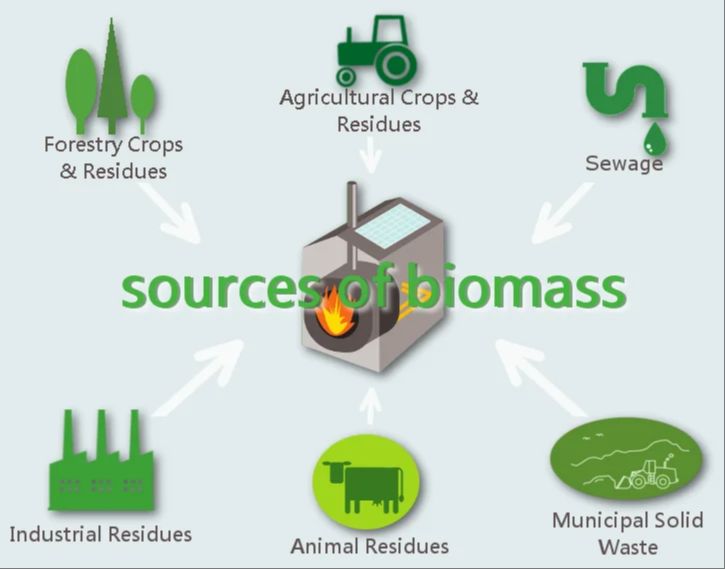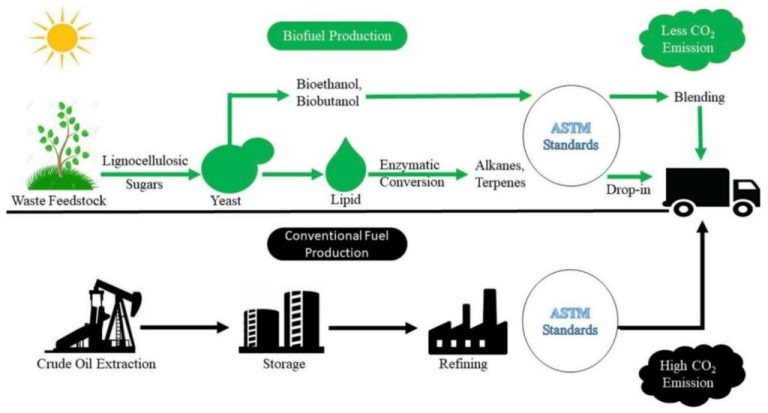What Are The Biomass Foods?
What is Biomass?
Biomass is organic material that comes from plants and animals. It is a renewable energy source. Biomass contains stored energy from the sun. Plants absorb the sun’s energy through photosynthesis. When biomass is burned, the chemical energy is released as heat. Biomass can be burned directly or converted to liquid biofuels or biogas that can be burned.
There are many different types of biomass. Wood and wood processing wastes from paper mills or lumber mills are very common biomass sources. Agricultural crops and waste materials such as corn, soybeans, sugar cane, and crop residues can also be used as biomass sources. Animal manure and human sewage are biomass sources that can be converted to biogas. Even municipal solid waste like everyday garbage contains biomass that can be utilized.
Biomass can be used to produce electricity, transportation fuels, or chemicals. As an energy source, biomass can either be used directly via combustion to produce heat, or indirectly after converting it to various forms of biofuel. Converting biomass into biofuels can provide more efficient energy and environmental benefits over direct combustion.
Types of Biomass
Biomass can be derived from various natural sources that are categorized into three main types:
Plant-based biomass
This refers to organic material that comes from plants and trees. Some examples of plant-based biomass include:
- Wood and wood waste – from forestry, landscaping, mills, etc.
- Agricultural crops and waste – corn, sugarcane, wheat, crop residues, etc.
- Grasses and plants – switchgrass, miscanthus, algae, etc.
- Organic municipal solid waste – food, paper, etc.
Animal-based biomass
This refers to organic material that comes from animals and animal waste. Examples include:
- Manure from livestock operations
- Fat, oil, grease, and other animal by-products
- Animal municipal waste
Municipal biomass waste
This refers to the organic portions of municipal solid waste from household, commercial and industrial sources such as:
- Food waste
- Paper and cardboard
- Green waste
- Textiles
These different categories demonstrate the wide range of biomass sources that can be utilized for energy, fuel, and other applications.
Common Biomass Food Sources
Biomass foods come from a variety of sources, but some of the most common are:
Corn: Corn is one of the most widely used biomass sources, particularly for biofuel production. The starch and cellulose in corn can be broken down into simple sugars and fermented into ethanol. Corn ethanol makes up the majority of biofuels in the United States.
Soybeans: Like corn, soybeans contain starches and oils that can be processed into biodiesel fuel. Soybeans are the second largest crop used for biofuels after corn. The protein left over after oil extraction is also used for animal feed.

Sugarcane: Sugarcane and sugar beet crops provide a high sugar content that can be efficiently fermented into bioethanol. Brazil in particular relies heavily on sugarcane ethanol for fuel.
Crop residues: Leftover residues from food crops, such as corn stalks, nut shells, and wheat straw, can be converted through thermo-chemical processes into biofuels. This provides added value from agricultural waste material.
Wood and wood waste: Forestry products like dead trees, sawdust, and mill scrap wood can be collected and burned to generate biomass power. Wood pellets are also common biomass fuels.
Using Biomass for Fuel
Biomass can be converted into various types of fuel to provide renewable energy. Some of the common ways biomass is used for fuel include:
Producing Biomass Fuels
Biomass fuels are produced from organic matter such as plants, agricultural waste, and forestry residues. Through various processes like combustion, pyrolysis, and anaerobic digestion, biomass can be transformed into solid, liquid, and gaseous fuels. Some examples are wood pellets, biodiesel, and biogas. Converting biomass to fuel is a sustainable way to generate energy while reducing waste and making use of renewable resources.
Types of Biofuels
Some common types of biofuels from biomass include:
- Biodiesel – Made from vegetable oils, animal fats, algae
- Bioethanol – Made from fermenting sugars from crops like corn, sugarcane
- Biogas – Generated from anaerobic digestion of organic matter like manure
- Wood pellets – Made by compressing sawdust and wood shavings
Benefits of Biofuels
Using biomass for fuel production has many advantages:
- Renewable – Biofuels are made from organic materials that can be replenished.
- Reduced fossil fuel use – Biofuels can replace non-renewable petroleum fuels.
- Lower greenhouse gas emissions – Biofuels burn cleaner than fossil fuels.
- Energy independence – Local biofuel production reduces reliance on imported oil.
- Waste reduction – Biofuels utilize agricultural residues and waste as feedstocks.
Overall, biomass represents a sustainable source for renewable fuels that can provide energy security and environmental benefits.
Biomass Energy Production
Biomass can be converted into various forms of energy and fuel through different processes.
Some key ways that biomass is used to produce energy include:
Thermal Conversion Processes
Thermal conversion involves heating biomass to high temperatures to produce gases, oils, and char. Common thermal conversion methods include:
- Combustion – Burning biomass directly for heat and electricity generation.
- Gasification – Heating biomass to produce syngas, which can be used for fuel.
- Pyrolysis – Heating biomass in the absence of oxygen to produce bio-oil.
The advantage of thermal conversion is that it can utilize a wide variety of biomass feedstocks. However, it requires high energy input and produces some emissions.
Biochemical Conversion Processes
Biochemical conversion uses bacteria, enzymes, or other biological agents to break down biomass. Common methods include:
- Anaerobic digestion – Bacteria break down biomass to produce biogas containing methane.
- Fermentation – Microbes and enzymes break down biomass sugars into alcohols like ethanol.
The advantage of biochemical conversion is that it produces clean, liquid biofuels suitable for transportation. However, it requires feedstocks with high sugar or starch content.
In summary, thermal and biochemical conversion allow biomass to be transformed into a variety of energy carriers and fuels. The appropriate technology depends on the form of biomass available and the desired end product.
Sustainability of Biomass
The sustainability of biomass as an energy source has been debated, as it can have both positive and negative impacts. Some key considerations around biomass sustainability include:
Carbon Neutrality
Biomass is considered a carbon neutral energy source, because the carbon released when biomass is burned is equal to the carbon absorbed during plant growth. However, some argue that biomass emits more carbon when burned than fossil fuels. There are also concerns around the carbon impacts of harvesting, processing and transporting biomass feedstocks.
Land Use Changes
Large-scale biomass production may encourage conversion of forests or grasslands into agricultural land. This land use change can release carbon stored in soils and vegetation. There are concerns that biomass production competes for land with food crops.
Biodiversity Impacts
Intensive biomass farming practices may negatively impact biodiversity through monocropping, use of pesticides/fertilizers, and replacement of natural habitat with biomass plants. Certain conservation groups argue that even selective harvesting of forest biomass threatens biodiversity.
Overall, the sustainability of biomass depends on the feedstock source and production methods. With responsible practices, biomass can be a renewable energy source, but larger scale production raises valid environmental concerns.
Biomass Food Products
Biomass is used to produce various food products that we commonly use. Some of the main biomass food products include:
Biofuels – Biofuels like ethanol and biodiesel are made from biomass sources like corn, sugarcane, and vegetable oils. Ethanol is commonly blended with gasoline to power vehicles. Biodiesel is made from fats and oils and can power diesel engines. Using biofuels provides a renewable alternative to fossil fuels.
Bioplastics – Bioplastics are plastics made from biomass sources like corn, potatoes, rice, and cellulose. They provide an alternative to plastics made from fossil fuels. Bioplastics are biodegradable and more environmentally friendly. Common uses include food packaging, bottles, utensils and more.
Wood pellets – Wood pellets are made by compressing sawdust and wood byproducts. They serve as a renewable biomass fuel used for heating and electricity generation. Wood pellets produce less air pollution compared to coal. They are more energy dense and uniform than raw wood, allowing efficient storage and usage.
Biomass Cooking
Biomass fuels like wood, charcoal, and biomass briquettes are commonly used for cooking around the world. Their high energy density and ready availability make them a convenient cooking fuel, especially in rural areas without access to other energy sources.
Wood-burning stoves are a traditional cooking technology that use firewood as fuel. They come in many forms, from simple three-stone cooking fires to advanced wood cookstoves with engineered combustion chambers for high efficiency. With proper maintenance and operation, wood stoves can provide low-cost, sustainable cooking energy. However, traditional open wood fires produce harmful smoke and black carbon emissions. Advanced wood stove designs seek to reduce this impact through improved combustion.
Charcoal grills are a popular way to cook food over biomass. Made from wood that has been pyrolyzed in a low-oxygen environment, charcoal can reach higher temperatures than wood while producing less smoke. Portable charcoal grills allow cooking outdoors at picnics, campsites, or backyard barbecues. Commercial-scale charcoal grills are used in restaurants to cook meats rapidly over high heat.
Biomass briquettes compact biomass waste like sawdust, rice husks, or bagasse into dense bricks. With uniform size and consistent burning, briquettes can substitute for charcoal in grills and stoves. Briquetting waste biomass that would otherwise be discarded gives this material value and reduces demands on forests and charcoal production. Briquettes burn cleanly and offer a renewable fuel source.
Industrial Uses of Biomass
Biomass has a number of industrial applications that make use of its energy content to generate electricity, provide heating and cooling, and produce transportation fuels.
Electricity Generation
Biomass can be used to generate electricity through direct combustion, where it is burned to heat water and produce steam that spins turbines. This method allows biomass to provide base load and dispatchable power generation. Wood pellets, agricultural residues, and waste products can all serve as feedstocks for biomass power plants.
Heating and Cooling
The heat produced during biomass combustion can provide low-carbon thermal energy for industrial processes, as well as heating and cooling for residential and commercial buildings. Biomass heating systems may burn solid biomass directly or use pyrolysis oils and biogases captured from biomass feedstocks.
Transportation Fuels
Biofuels produced from biomass like ethanol, biodiesel, and renewable diesel can provide low-carbon alternatives to petroleum-based transportation fuels. Ethanol is commonly blended with gasoline, while biodiesel and renewable diesel can replace traditional diesel. Waste oils, corn, sugarcane, and other oil crops are some of the common biomass sources for biofuel production.
Future of Biomass
There are several promising developments in biomass technology that could shape the future. These include advanced biofuels, biomass gasification, and hydrothermal processing.
Advanced biofuels go beyond traditional ethanol to create renewable gasoline, diesel, and jet fuel. These “drop-in” fuels can directly replace petroleum without engine modifications. Advanced biofuels are produced from non-food biomass like agricultural waste and woody crops grown specifically for energy. This avoids competition with the food supply while providing clean, sustainable transportation fuels.
Biomass gasification involves heating biomass in an oxygen-restricted environment to produce a synthesis gas (“syngas”). The syngas can be burned directly for electricity or converted into fuels and chemicals. Gasification enables more efficient energy extraction from biomass and flexibility in end-products.
Hydrothermal processing uses hot water at high pressures to break down biomass into crude oil. This “biocrude” can then be refined into finished fuels like gasoline and diesel. Hydrothermal processing can convert wet biomass with high efficiencies, avoiding the energy-intensive drying required by other methods.
Together, these developing technologies may enable biomass to play an increasing role in a sustainable energy future.






